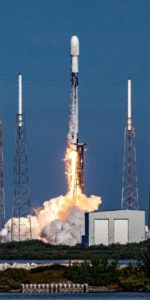
Cats might have nine lives, or so it is said, but United Launch Alliance (ULA) proved that the same is true for its Majestic Delta as the long-delayed NROL-44 mission finally got airborne on its ninth attempt at 8:09 p.m. EST Thursday. Launching into the darkness from Space Launch Complex (SLC)-37B at Cape Canaveral Air Force Station, Fla., the triple-barreled Delta IV Heavy—the world’s second most powerful rocket in active operational service—had spent an unenviable 13 months on the ground, its date with destiny hampered by weather and technical issues.
Aboard the giant rocket was NROL-44, a highly classified payload being launched on behalf of the National Reconnaissance Office.
As outlined in AmericaSpace’s NROL-44 preview article earlier this week, this mission has weathered no less than eight foiled launch attempts. The Delta IV Heavy was rolled out to the pad in November 2019, with an initial expectation that it would fly in June 2020. That date subsequently slid to 26 August, followed by an additional 24-hour delay at the request of NROL-44’s customer, the National Reconnaissance Office.
Another two-day postponement was forced by a ground pneumatic control system issue, before the Heavy endured a dramatic last-second Hot Fire Abort at T-3 seconds on the 29th. Four more attempts to get the snakebitten mission off the ground in late September also came to nought, thanks to the intractable Florida weather, a hydraulic issue with SLC-37B’s swing-arm system and another last-second pad abort.
Hopes of flying in late October were called off and the mission was officially declared “Indefinite on the Range” as ULA tended to a raft of technical issues. At length, on 4 December, it was announced that a revised launch attempt would be made on Thursday evening. Weather conditions were predicted to be 90-percent favorable, deteriorating slightly to 80 percent in the event of a scrub to Friday and 70 percent should the mission be put on hold until Saturday.
“Favorable weather is anticipated during Thursday evening’s launch attempt, with little concern of a weather-related violation,” noted the 45th Weather Squadron at Patrick Air Force Base in its L-1 update, issued Wednesday.
“High pressure will cross the state and push into the western Atlantic late in the week, resulting in gradually moderating temperatures and a very slow increase in moisture. Aside from scattered to broken low-level clouds, weather conditions are expected to remain generally favorable Friday, with only a small chance for the Cumulus Cloud Rule violation in the event of a 24-hour delay.”
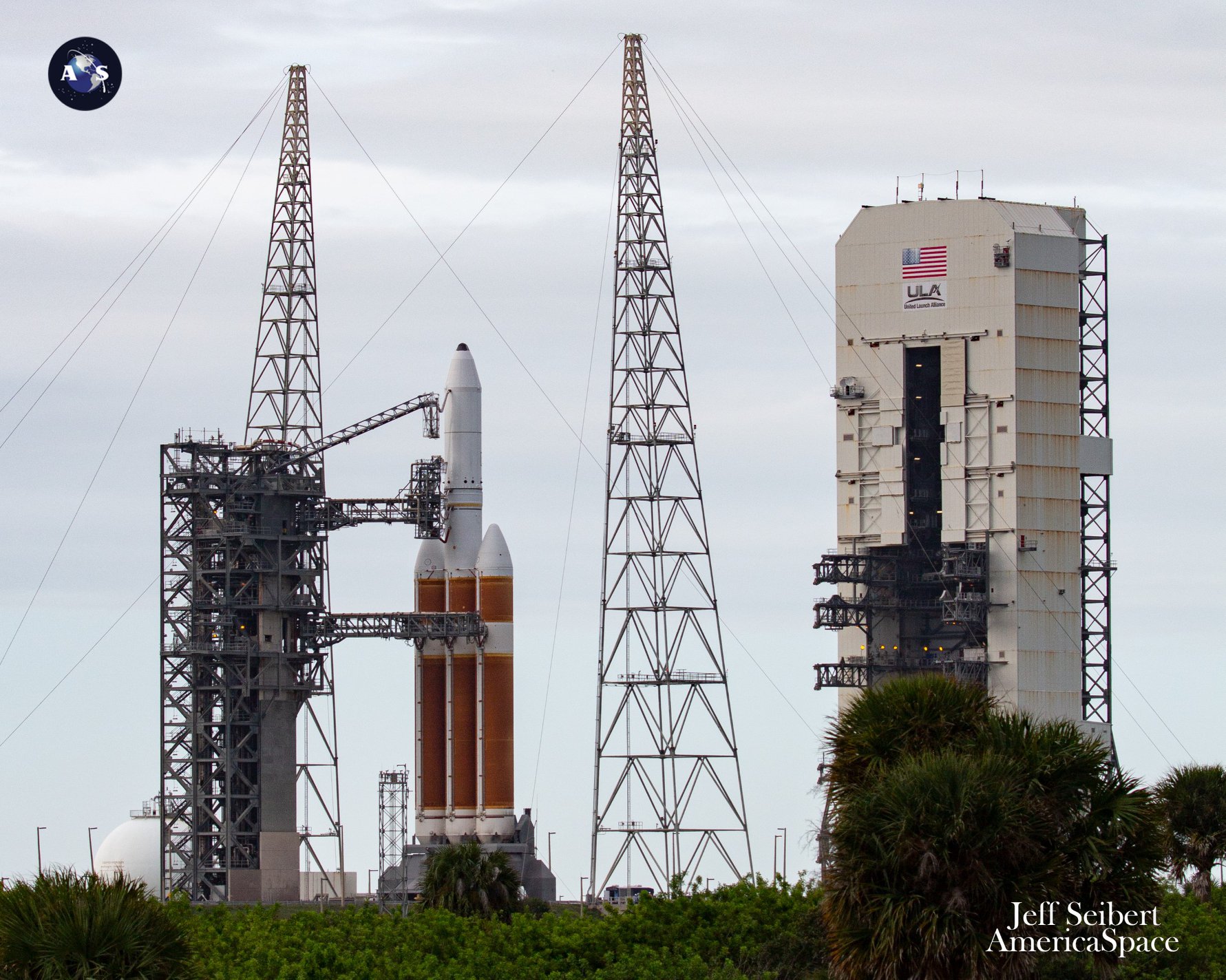
Following a smooth Launch Readiness Review (LRR) on Wednesday, teams officially pressed ahead with Thursday’s launch attempt, aiming for T-0 at 6:15 p.m. EST. “No open issues, Pgo at 90 percent,” tweeted ULA CEO Tory Bruno, offering an encouraging perspective of no technical issues and a high probability of good weather.
Countdown operations began crisply at 9:45 a.m. Thursday with the power-up of the Heavy’s avionics and other critical systems. At 10:32 a.m., the 330-foot-tall (110-meter) Mobile Service Tower (MST) was jacked up by a few inches and began its slow rollback away from the rocket. Forty-seven minutes later, having moved at a glacial pace of just a quarter-mile-per-hour (0.4 km/h), the MST reached its launch position and was declared “hard-down” and secured in place.
But hopes of meeting the targeted 6:15 p.m. liftoff time evaporated, when ULA Launch Director Lou Mangieri instructed the launch team to co-ordinate a new T-0 for 8 p.m. EST. In the meantime, flight control systems aboard the 235-foot-tall (72-meter) rocket were initiated and systems were conditioned with gaseous nitrogen, ahead of fueling.
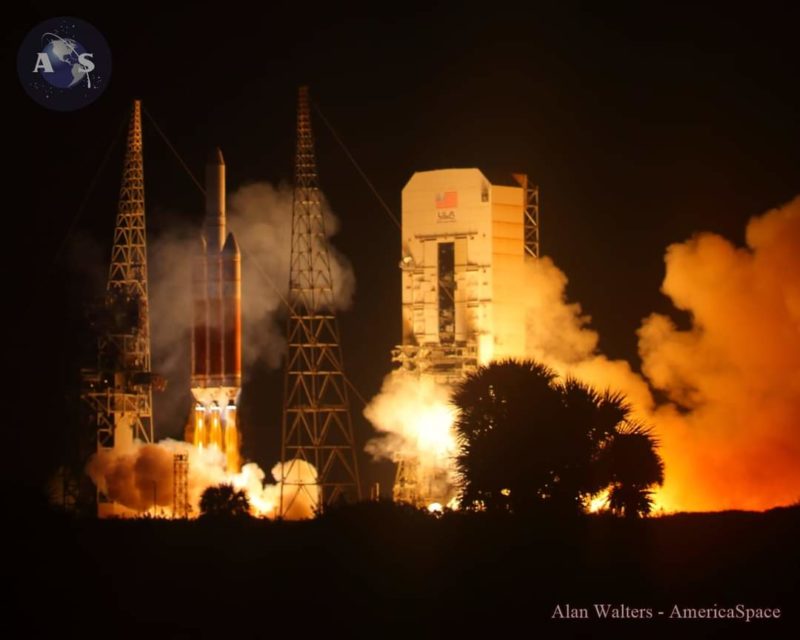
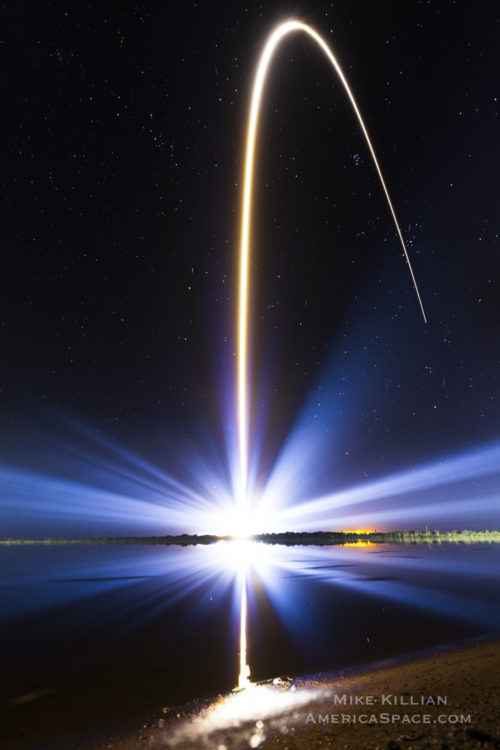
As if willing the long-delayed mission to finally fly, even Mother Nature came online, with Launch Weather Officer Will Ulrich declaring that the outlook had improved to 100 percent. At 3:35 p.m., the countdown emerged from the first of two 15-minute built-in holds, with a definitive “Go for Fueling” co-ordinated between Mr. Mangieri and ULA Launch Conductor Scott Barney. The Heavy’s liquid hydrogen storage tank was pressurized and high-pressure helium bottles on the three Common Booster Cores (CBCs) and the Delta Cryogenic Second Stage (DCSS) were charged.
Then, at 4 p.m., shortly before fueling was due to commence, came an anomaly in the form of an issue with the rocket’s hazardous gas detection system. The countdown clock was halted as the system was recalibrated. With the problem resolved, the clock started ticking again at 4:24 p.m. and Mr. Mangieri announced a revised T-0 of 8:09 p.m. Loading of the Heavy with over 440,000 pounds (200,000 kg) of liquid oxygen and hydrogen got underway shortly thereafter.
“Count is progressing cleanly,” tweeted Mr. Bruno. “The Majestic Delta IV Heavy is looking longingly to the heavens.”
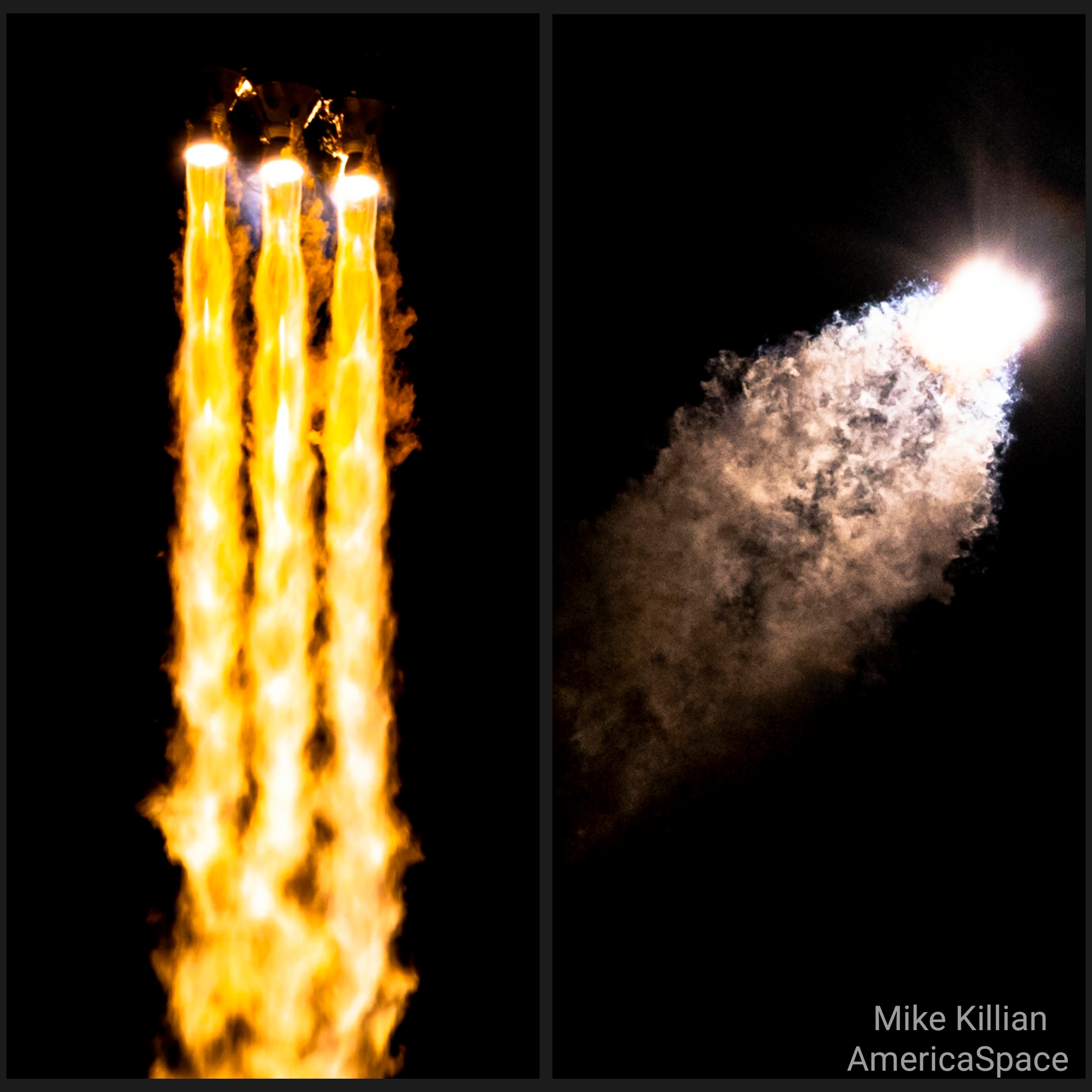
Entering the countdown’s final pre-planned hold at T-4 minutes, more than two dozen engineers were polled by Mr. Barney for their readiness to support the launch. At length, Mr. Mangieri and NRO Mission Director Col. Chad Davis gave their permission to go. Clocks resumed counting at 8:05 p.m., with an ethereal quietness on the countdown net, as propellant tanks attained their proper flight levels and pressures. At T-80 seconds, the Heavy transitioned from ground power to internal power, its on-board ordnance was armed and its on-board flight software went active.
A final Status Check produced a definitive “Go” across the board and at T-14 seconds the pad-side Radial Outward Firing Igniters (ROFIs) came to life, glittering like sparklers to clear unburnt hydrogen from the vicinity of the RS-68A engines. After 13 months shackled to Earth, the roar of the Heavy—and its slightly disconcerting habit of seeming to set its insulation on fire at liftoff—woke anything still sleeping on the Space Coast with an unearthly 2.1 million pounds (1.1 million kg) of thrust.
It was the 12th launch of a Heavy since December 2004, marking the beginning of the end for an impressive rocket which has now lifted eight classified NRO payloads, NASA’s Parker Solar Probe, the final Defense Support Program (DSP) early-warning satellite and the inaugural voyage of the Orion deep-space exploration vehicle. But tonight’s mission with NROL-44, despite all the media attention it has received for the wrong reasons since August, is completely shrouded in mystery.
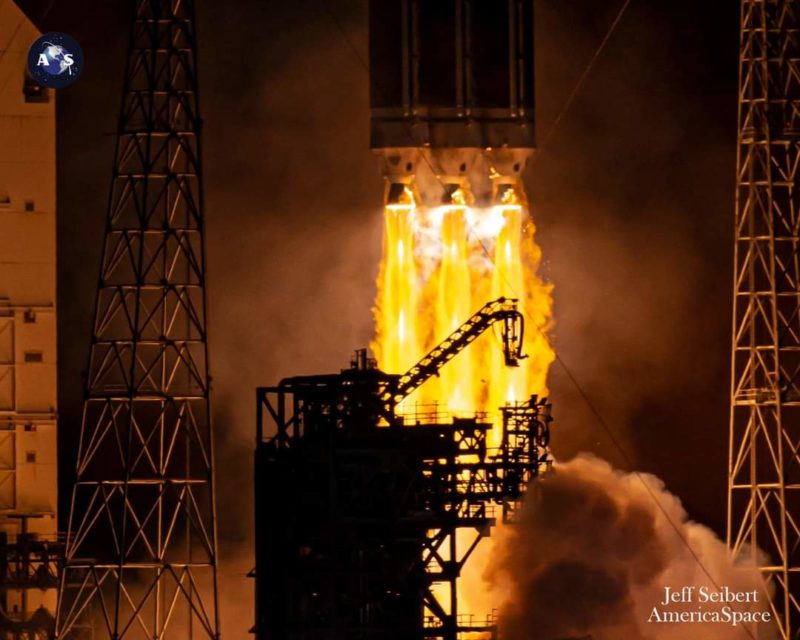
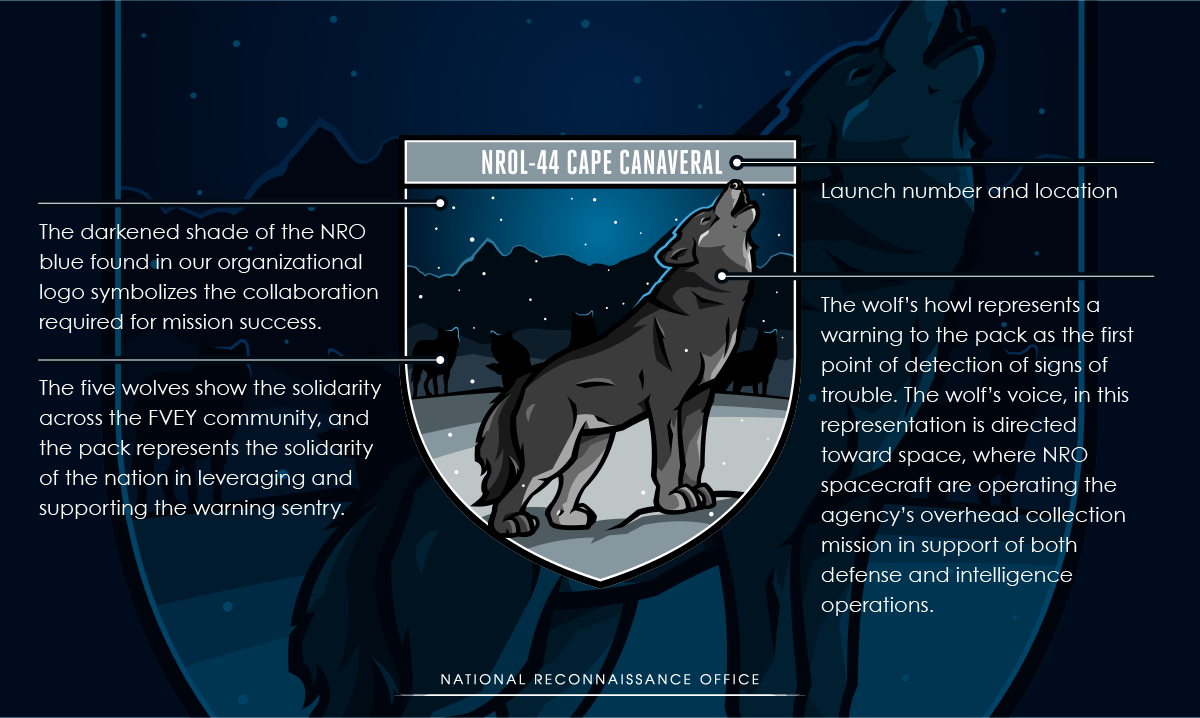
Judging from the Heavy’s lifting credentials—about 63,470 pounds (28,790 kg) to low-Earth orbit and up to 31,350 pounds (14,220 kg) to geostationary altitude—it would appear that NROL-44 is a heavyweight payload with a particularly high-energy-orbit requirement. It has been suggested that it may be an Advanced Orion/Mentor signals-intelligence satellite, perhaps weighing as much as 11,500 pounds (5,200 kg) and bound for a geostationary “slot” some 22,600 miles (35,900 km) above the Home Planet.
This possibility would certainly be in keeping with suspicions about earlier Delta IV Heavy missions for NRO, with four previous payloads including NROL-37 also rumored to be of the Advanced Orion/Mentor type. “The Northrop Grumman satellite has a Harris mesh antenna spanning about 330 feet (100 meters),” AmericaSpace explained in its NROL-37 launch report back in June 2016. “The overall spacecraft was substantially upgraded starting in 2009 with the NROL-26 flight carrying the first Advanced Orion/Mentor.”
Others are thought to have included NROL-32 in November 2010, NROL-49 in January 2011, NROL-15 in June 2012 and NROL-37 in June 2016. The lifting capability of the Delta IV Heavy’s RS-68A engines is also believed to afford the satellites added “maneuvering, life-extending and eavesdropping intelligence capabilities”.
.
.
FOLLOW AmericaSpace on Facebook and Twitter!
.
.





